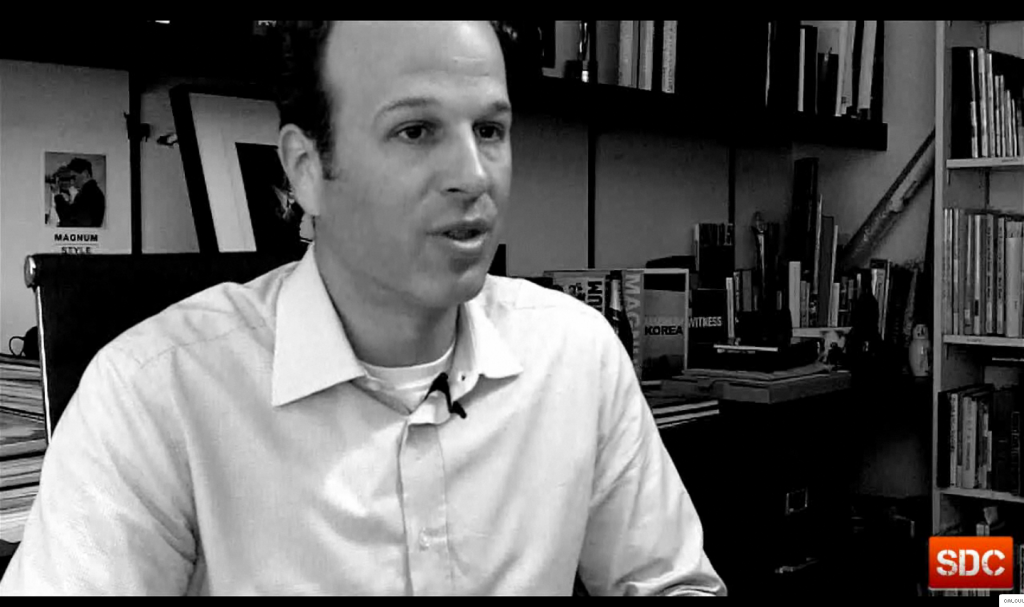“Where there is chaos there is usually the greatest opportunity”
Written by Ciara LeemingSome words of wisdom from Mark Lubell, managing director of Magnum Photography and founder of its multimedia arm, Magnum in Motion, in the latest Sortir du cadre interview, looking at the future for photojournalism. Previous treats have included VII director Stephen Mayes.
“If Robert Capa had said ‘no way, I’m not using a hand-held camera’ then we would have no pictures of D-Day,” he points out. “If this [multimedia and new revenue streams, away from magazines and newspapers] is the future, why turn back from it? We just need to diversify….”


Discussion (2 Comments)
Magnum are stuck by representing the people who are making the content and the views they represent.
There is also a really scary statement where the MD says the narrative is the “loss leader” for the images as a commodity to sell.
This is madness based on the single image gallery culture that exists today. Salgado sold so much because he understood economic diversification, the idea of a serious cohesive narrative and the how the parts all fed into an ambitious whole. Migrations was more than just a book – it was a movement that tapped into the serious issue of globalisation. He did not break up a story into a series of syndicated single images from an editorial length work. He created multiple narratives that reflected the whole. So the world saw what they knew was going on. Yann Arthus-Bertrand also maintained a narrative of ambition and they both trusted he had the knowledge to report on subjects that he knew about rather than show how he felt at the time of being there. He did more than show people he can take a good shot.
This is where Magnum fails. It talks about the future, diversification, mission statements, engagement but what he does not actually ever speak about is how the photographers of Magnum have to change themselves. For example, they need a centralised research centre so that they can make sure they have the intellectual credibility behind the beauty in their images. Would a newspaper hire a journalist simply because they can draw beautifully? Why should we call these people journalists when all they are seen to do is shoot pretty pictures or exploit suffering.
Until they can answer this question: How can we help our freelancers be knowledgeable enough to understand an issue enough to shoot the story? then they will suffer and be reduced to selling yet more rehashes of their archives in expensive books.
Without the intellectual integrity, the art, emotions and beauty will always shine in a collective full of talented photographers but it is only skin deep without the substance. Photojournalists need to debate, inform and educate and not just wow and guilt people into engagement. Break the editorial form and move away from the single images.
Without looking in the mirror, they will not change themselves.
Sorry all, I should check my grammar before sending….